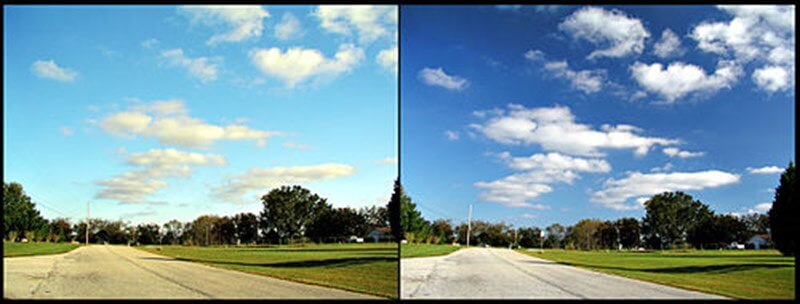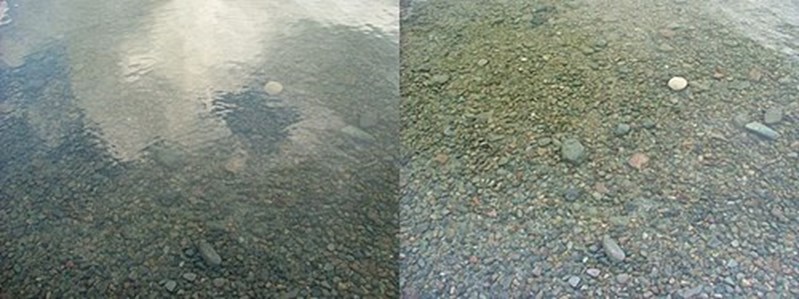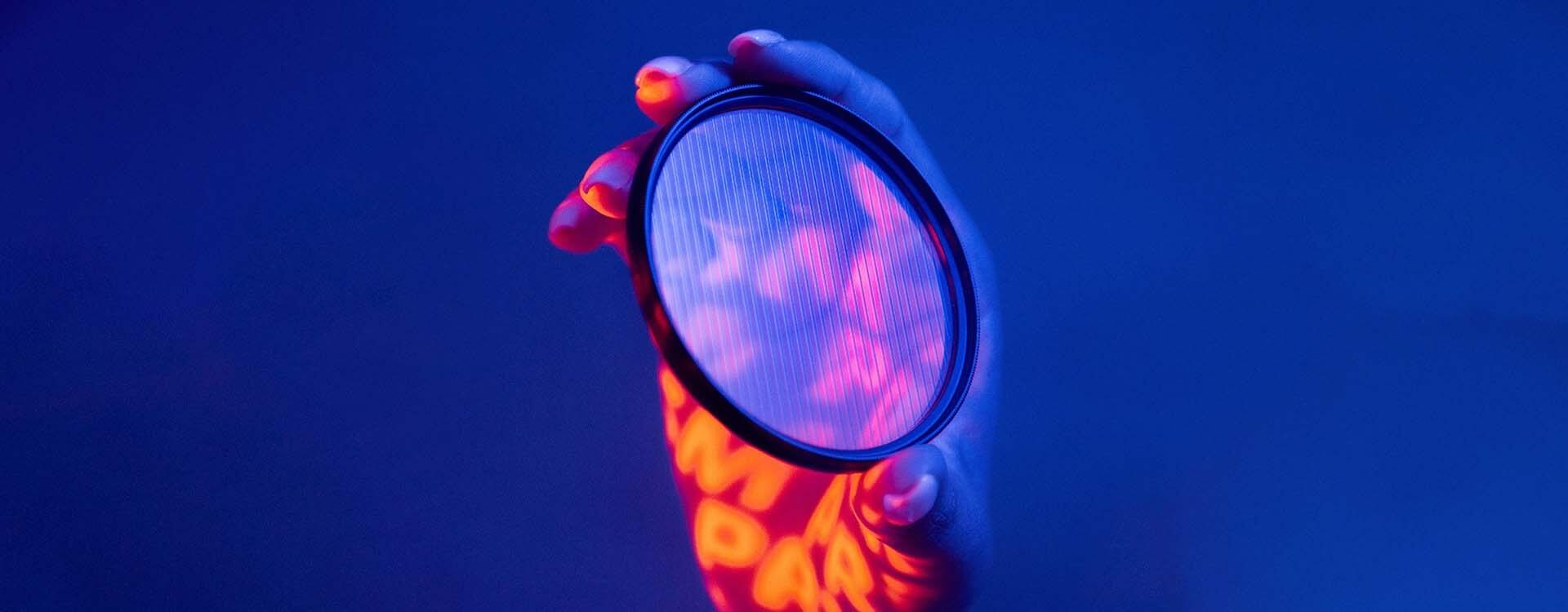Highlights
Table of Contents
Explore article topics
Polarizing filters can dramatically impact your images, especially if you shoot in natural light a lot. So getting to know how they work and investing in one could certainly be worth your time and money.
What is a polarizing filter?
A polarizing filter, or polarizer, is used to intensify blue skies, brighten or saturate colors, and reduce reflections, glare and haze in images. The same as other types of lens filters, polarizers sit over your lens and can either screw into your lens’ filter thread or be used with filter holders. You then rotate the filter to find the optimum position to separate out the polarized light that is heading toward your camera from a given direction.

Unlike almost every other type of lens filter out there, possibly except for the diffusion filter, a polarizer’s results cannot be accurately replicated in post-production. So despite being quite expensive, polarizers really are invaluable.
How does a polarizer work?
When light radiates from a source, it does so in all directions equally. If it bounces off of something, such as water, glass, or any particulates that also float about in the atmosphere, it polarizes. Instead of moving off in multiple directions, it tends to reflect at the same angle. This shows as reflection, glare or haze.
A polarizing filter can separate out polarized light, moving at a particular angle from non-polarized light. To find the optimum position to filter out light coming from a given direction, you rotate the polarizer in front of your lens and choose the best effect for your shot. If you look through your viewfinder or at your LCD as you turn the filter, you will see a reduction in glare or an increase in color saturation.

Linear vs. circular polarizing filters
Polarizing filters come in 2 varieties: linear and circular. Linear vs. circular doesn’t refer to the shape of the filter but rather to how they modify light rays that pass through them.
Linear polarizing filters only have 1 polarizing layer on them. As a result, when light rays have passed through it, they can be cross-polarized by the mirrors in DSLR cameras which in turn interferes with autofocusing and metering technology.
Circular polarizing filters (CPLs) contain two polarizing layers. The 2nd one, called a “quarter-wave plate,” repolarizes the light that passes through the 1st layer. While repolarizing the light you’ve just polarized might sound counterintuitive, it remains polarized, just differently. It will no longer disturb the metering or autofocusing processes of the camera. So while CPLs are more expensive than linear polarizers, they do enjoy better performance.

Circular polarizer | Image by PiccoloNamek (CC BY-SA 3.0)
That said, CPLs will block some light from reaching your sensor, maybe as much as three stops. This means that to properly expose your scene, you’ll have to use some exposure compensation, for example, by setting a larger aperture.
ND filters vs. polarizers
If a CPL blocks light from your sensor, can you use it like a neutral density (ND) filter to help control exposure in very bright conditions? Yes, you can. But what you have to remember is that an ND filter won’t have any impact on the colors or any reflections in your scene. If you’re looking to shoot a scene with accurate color reproduction or with reflections for whatever reason, you’re best using an ND filter.
Get unlimited royalty-free 4K footage
The benefits of polarizing filters, and when to use them
You should use a polarizing lens filter when you want to reduce glare or reflection from water, glass, or even leaves. If you’re shooting through glass, for example, a shop or train window, a polarizer can help remove any reflections that will distract the audience. Total elimination of reflections is unlikely, but a significant reduction is possible.

If you want to intensify the blue of the sky or saturate colors more deeply, a polarizing filter will help by reducing the direct reflections in a scene. This effect works best on bright sunny days, rather than overcast ones, and when you’re shooting at an angle perpendicular to the sun. Similarly, by reducing the reflections off of random particulates in the atmosphere–for example, water droplets or pollution–you can reduce haze and increase clarity in landscapes and cityscapes. This is especially useful when you’re shooting scenes from a significant distance.
The disadvantages of polarizers, and when not to use them
CPLs are brilliant pieces of kit, but they don’t work in all conditions and, under some circumstances, can make your footage look worse rather than better.
For a start, if you’re shooting with the sun directly behind you, a polarizing filter will not have a discernible impact on your footage.
If you pan, the alteration in the sun’s angle to your camera can result in changes in the degree of polarization.
While polarizers can reduce the reflection and glare coming from glass and water, they can’t reduce reflection coming off metallic surfaces. The light reflected off metallic surfaces isn’t polarized, so a polarizer has no impact. And while light will reflect off of other surfaces mostly from the same angle, it won’t be entirely uniform, so you won’t be able to eliminate reflection or glare completely.
Using a polarizing filter when you’re shooting around sunrise or sunset or trying to capture a rainbow can work against you. In these situations, you’re usually looking to capitalize on the reflected light and its colors rather than negate it.
Depending on the angle of the sun to your camera, shooting with a wide-angle lens and a polarizer can produce an uneven effect across your scene. You might find that anywhere facing directly into the sun will appear much darker than areas at 90º to the sun.
Adding another layer of glass in front of your sensor can increase the likelihood of picking up flare or ghosting, too. This is particularly noticeable if your polarizer is dirty, so make sure that it’s always clean.
Wrapping up
Polarizing filters have remained pretty much unchanged since 1938, which means they must be good at their job and doing it right. You’ll have to spend a bit of time learning how to use a polarizer. Every time you use one, you will need to adjust it according to the conditions, but the results will be worth it. Reduced reflections. Deeper colors. Less haze. What’s not to like?
Daniela is a writer and editor based in the UK. Since 2010 she has focused on the photography sector. In this time, she has written three books and contributed to many more, served as the editor for two websites, written thousands of articles for numerous publications, both in print and online and runs the Photocritic Photography School.
Share this article
Did you find this article useful?
Related Posts
- By Jessica Peterson
- 6 MIN READ
- By Daniela Bowker
- 8 MIN READ
Latest Posts
- 25 Apr
- By Josh Edwards
- 4 MIN READ
